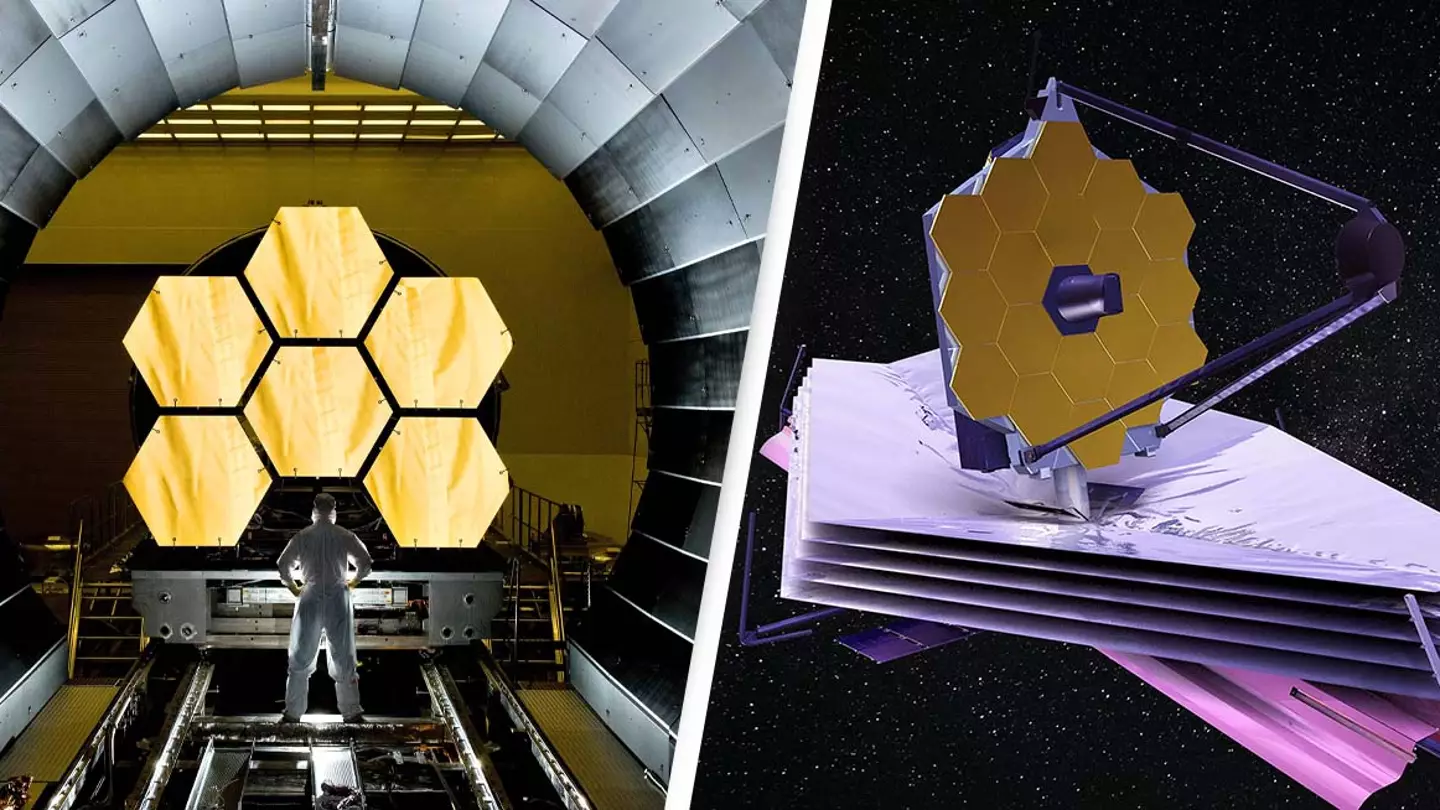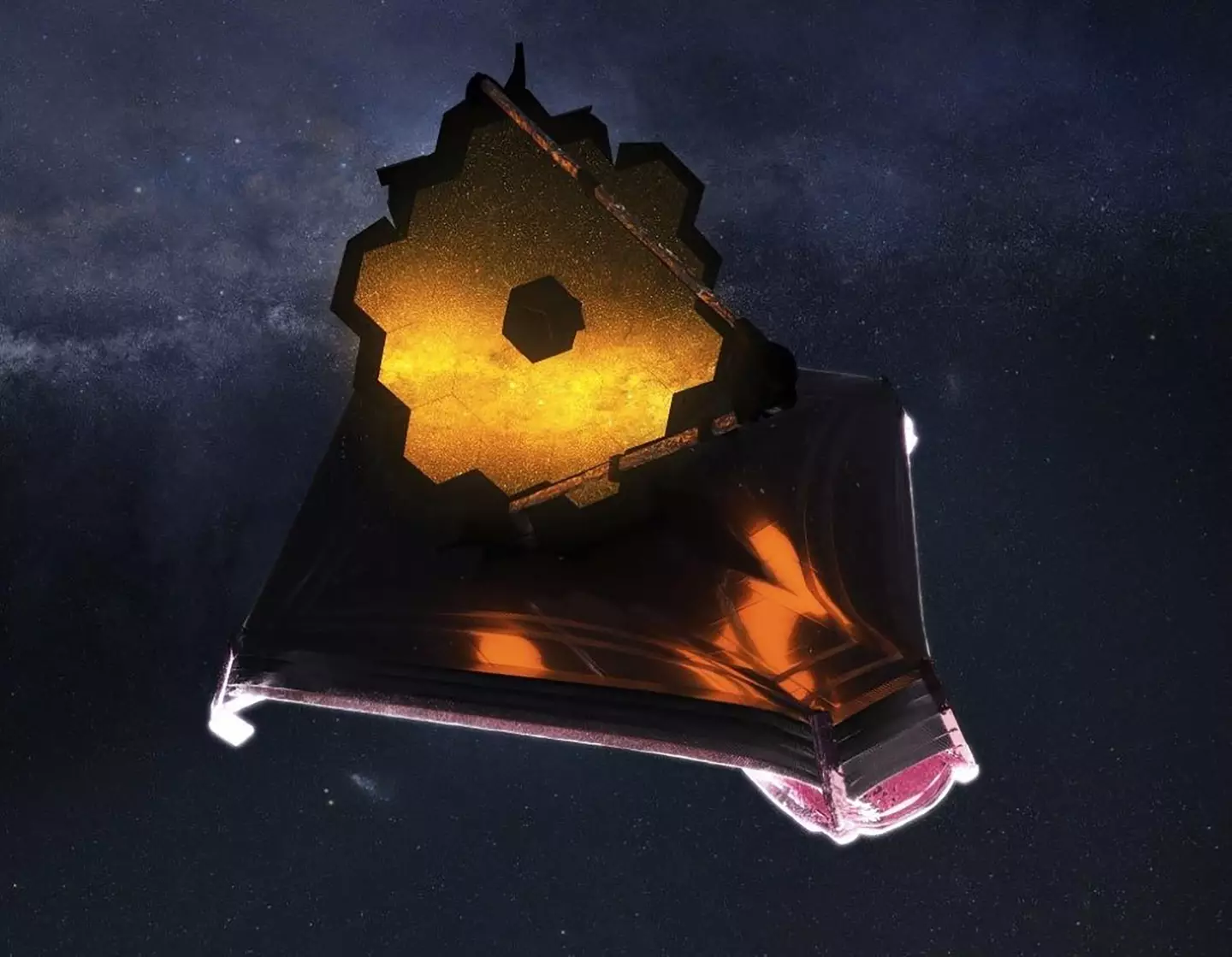
After 38 days in space, NASA has confirmed the James Webb Telescope has detected its first signal.
The infrared observatory launched from the European Space Agency spaceport in French Guiana on Christmas Day last year. It's now entered the three-month process of aligning and cooling down before observing the universe.
Earlier this week, NASA confirmed that Webb team members saw the first photons of starlight through the entire telescope, which were detected by the Near Infrared Camera (NIRCam) instrument.
'This milestone marks the first of many steps to capture images that are at first unfocused and use them to slowly fine-tune the telescope. This is the very beginning of the process, but so far the initial results match expectations and simulations,' a NASA press release explained.
Advert
The telescope is cooling in order for the telescope to deliver its full potential in observing galaxies, exoplanets and other space objects, and it's why it's only registering individual photons in the detectors right now.
Once the 18 hexagonal elements of the primary mirror have been properly aligned, they'll act as a single mirror looking into the universe, rather than lots of little ones working independently.

'To put this in perspective, if the Webb primary mirror were the size of the United States, each segment would be the size of Texas, and the team would need to line the height of those Texas-sized segments up with each other to an accuracy of about 1.5 inches,' NASA explained.
Advert
John Mather, an astrophysicist who works at NASA's Goddard Space Flight Centre, also broke it down. 'First, we have to find the images that all of those 18 different hexagons are making then figure out which one is which, and then start sending commands to the little motors that move the viewers around to get them in the right place,' he said.
'Then surely, we get them lined up so they do a nice sharp image with a near-infrared camera. Then we have to check that the other three instruments are also in focus.'
The images taken during this period of preparation won't be 'pretty', but they are critical in getting the telescope ready. For reference, the Hubble telescope launched in April 1990, and it wasn't until nearly a year later that we got the first incredible observations of Jupiter.
Advert
Due to the the mid-infrared instrument, which hasn't been turned on yet, Webb will be capable of 'beautiful pictures' as it works to 'solve mysteries in our solar system and look beyond to distant worlds around other stars', but they'll be different to what we've seen before.
'We can see into and through the dust clouds using infrared because the infrared will go around the grains instead of bouncing off. It will still be beautiful pictures, but it'll be different,' Mather said.
If you have a story you want to tell, send it to UNILAD via [email protected]
Topics: NASA, Space, Technology
